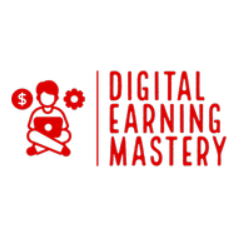Want to start a dropshipping business in 2025? This ultimate guide covers everything from niche selection and supplier sourcing to store setup and marketing tips.
If you’ve been thinking about launching an online business with minimal upfront costs, dropshipping might be the perfect fit for you. In 2025, the dropshipping model continues to grow in popularity due to its low barrier to entry and flexibility. Whether you’re a complete beginner or someone looking to diversify income streams, this guide will walk you through everything you need to start a successful dropshipping business in 2025.
What is Dropshipping?
Dropshipping is a retail fulfillment method where a store doesn’t keep the products it sells in stock. Instead, when a customer places an order, the retailer forwards the purchase details to a third-party supplier who then ships the product directly to the customer. As the store owner, you never handle the product physically.
Key benefits:
- Low startup cost
- No need for inventory management
- Flexibility to work from anywhere
Why Dropshipping is Still Viable in 2025
Despite growing competition, dropshipping remains a profitable and sustainable model. Here’s why:
Advancements in Automation: Tools like Oberlo, DSers, and AutoDS make managing a dropshipping store more efficient than ever.
Global Market Access: You can sell internationally without dealing with complex logistics.
Evolving E-commerce Platforms: Shopify, WooCommerce, and BigCommerce continue to offer user-friendly integrations for dropshippers.
Step-by-Step Guide to Starting a Dropshipping Business in 2025
1. Choose a Niche
Pick a market that balances passion, profitability, and demand. Avoid oversaturated markets unless you can bring a unique angle or value proposition.
Tips:
- Use tools like Google Trends, TikTok Creative Center, or Amazon Best Sellers to spot trending products
- Consider evergreen niches like fitness, pets, or personal care
2. Do Market Research
Analyze the competition and understand your target customer. Use platforms like AliExpress, Etsy, or Amazon to evaluate what’s selling and at what price point.
Key tools:
- SEMrush or Ahrefs for SEO analysis
- SimilarWeb or Ubersuggest for traffic research
3. Find Reliable Suppliers
Your supplier is a crucial part of the business. Look for consistency in product quality, shipping time, and communication.
Popular options:
- AliExpress
- Spocket
- CJ Dropshipping
- Zendrop
4. Build Your Online Store
Platforms like Shopify and WooCommerce make it easy to launch your store even if you’re not tech-savvy.
Essential features:
- Mobile-responsive design
- Secure payment gateways
- Clear product descriptions and images
- Customer review sections
5. Set Up Your Branding
Branding sets you apart. Focus on creating a memorable name, logo, and brand message. Tools like Canva and Looka can help you get started.
6. Create a Marketing Strategy
Marketing is the engine of your dropshipping business. Explore multiple channels:
Paid Ads: Facebook Ads, TikTok Ads, Google Shopping
Content Marketing: Blog posts, SEO, YouTube tutorials
Influencer Marketing: Partner with micro-influencers in your niche
Email Marketing: Build an email list for promotions and abandoned cart recovery
7. Launch and Optimize
Start small, analyze performance, and refine based on data. Track customer behavior, bounce rates, and conversion rates using Google Analytics and Shopify reports.
Common Dropshipping Mistakes to Avoid
- Relying on one supplier
- Ignoring shipping times
- Not researching the legal aspects (e.g., taxes, refund policies)
- Poor customer service
- Selling low-quality or generic products
Is Dropshipping Right for You?
Dropshipping isn’t a “get-rich-quick” scheme. It takes work, testing, and patience. But if you’re willing to put in the effort, it’s a scalable business model that offers both freedom and income potential.
Final Thoughts
Starting a dropshipping business in 2025 is more accessible than ever. With the right mindset, tools, and strategy, you can build a profitable e-commerce brand without the need for inventory or huge startup capital. Focus on delivering value to your customers, keep testing new ideas, and stay up-to-date with e-commerce trends—and you’ll be well on your way to success.
